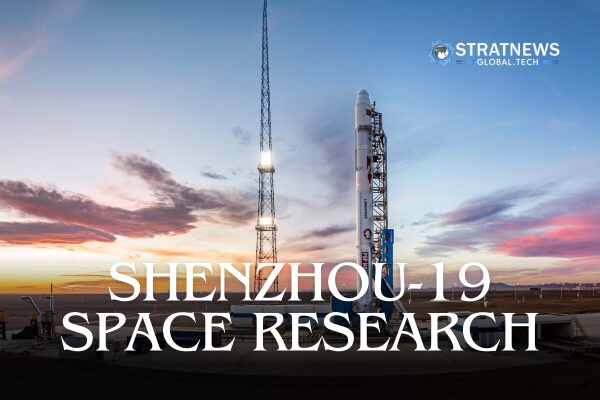Shenzhou-19 Crew Advances Scientific Research Aboard Tiangong Space Station
The crew of China’s Shenzhou-19 mission has been actively conducting scientific experiments and station maintenance aboard the Tiangong space station. According to the China Manned Space Agency (CMSA), the astronauts completed environmental monitoring, equipment inspections, and multiple research tasks last week.
Shenzhou-19 Conducting Groundbreaking Brainwave and Motor Control Experiments
The astronauts utilised electroencephalogram (EEG) equipment to gather data for various experiments. This research aims to help scientists understand the effects of gravity on visual motion processing and assess how brainwave music can regulate inhibitory control functions during extended space missions.
Additionally, the crew completed tests related to fine motor control and visual motion gravity representation. Using specialised instruments such as fine motor measurement devices, eye trackers, and experimental software, they collected valuable data to support future spaceflight research.
Exploring Motion and Pressure in Microgravity
Another key focus was studying the effects of different flight conditions on astronauts’ movements. The crew used plantar pressure collection equipment to record data, enabling researchers to analyse the relationship between motion state parameters and foot pressure.
Experiments in microgravity physics are also progressing as scheduled. The astronauts replaced experimental samples in the fluid physics and containerless experiment cabinets. They also completed vacuuming tasks in the combustion cabinet, ensuring smooth operation of ongoing scientific studies.
Advancing AI and Space Station Operations
The crew collaborated with China’s first AI flight robot, “Xiao Hang,” to conduct multimodal interaction experiments. These tests contribute to the development of AI-assisted space station management and astronaut support systems.
Beyond research, the astronauts carried out routine environment monitoring, equipment maintenance, and medical examinations. They also engaged in weightlessness protection exercises to maintain their physical health during the six-month mission.
A Mission Dedicated to Science and Innovation
Launched on October 30, 2024, the Shenzhou-19 crew includes China’s first female space engineer. Their mission involves conducting 86 scientific and technological experiments, furthering China’s space research and exploration capabilities.
With inputs from Reuters


